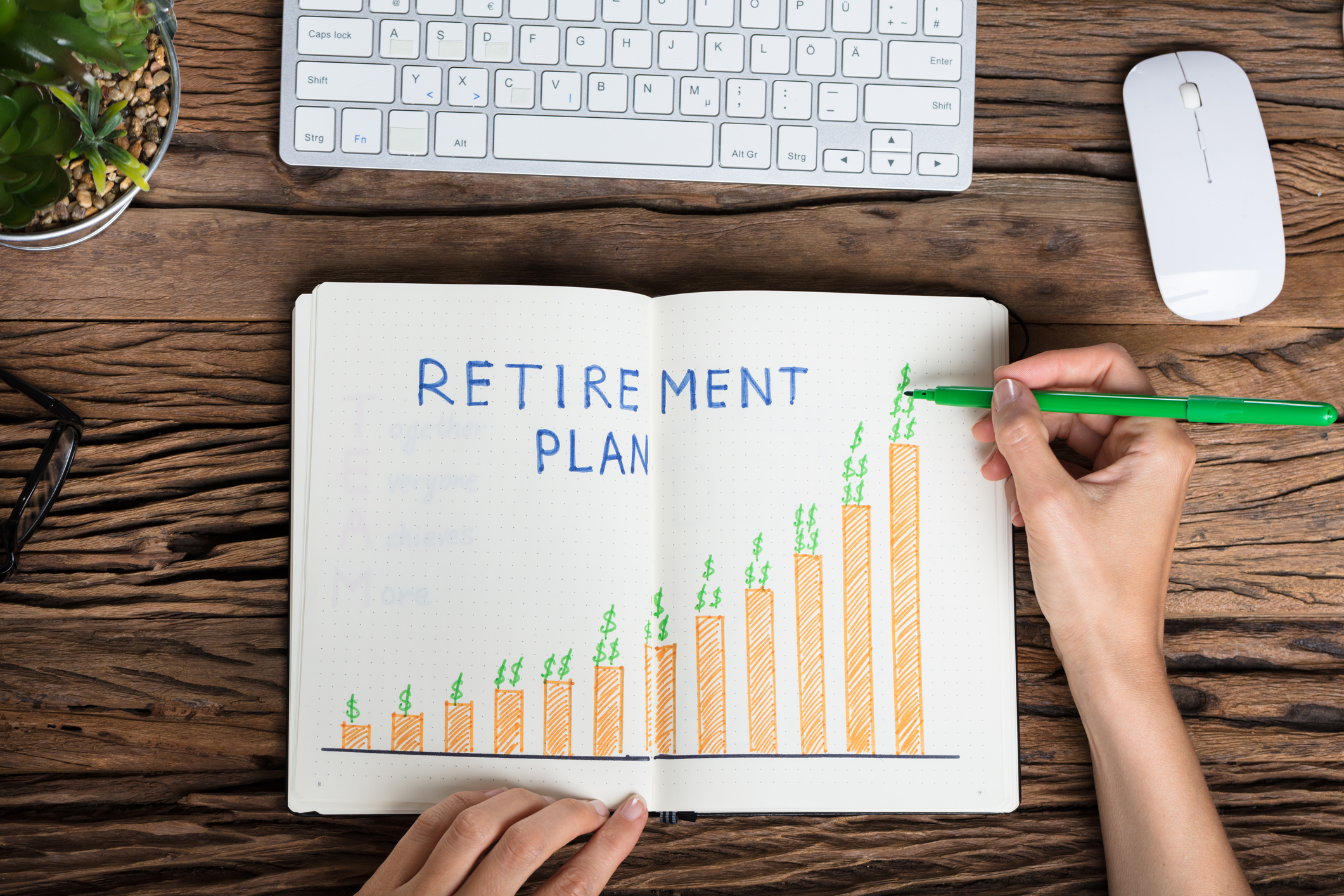
Once you have reduced your debt and created a workable spending plan, you’re ready to begin saving toward retirement. You may do this through a company retirement plan or on your own. Here are a few of the places where you might put your money for retirement:
• Savings accounts, money market mutual funds, certificates of deposit (CDs) and U.S. Treasury bills. These are often referred to as cash or cash equivalents because you can get to them quickly and there’s little risk of losing the money you put in.
• Domestic bonds. You loan money to a U.S. company or a government body in return for its promise to pay back what you loaned, with interest.
• Domestic stocks. You own part of a U.S. company.
• Mutual funds. These pool your money with the money of other shareholders and invest it for you, making it easier to invest and to diversify your money.
Where Should You Put Your Money?
For goals you want to accomplish quickly, it’s best to put your money into one or more of the cash equivalents, like a bank deposit. For goals at least five years into the future, such as retirement, consider putting some money into stocks, bonds, real estate, foreign investments, mutual funds or other assets. Keep in mind that these options are uninsured by the federal government, so they carry the risk that you can lose some of your money. Generally, the longer you have until retirement and the greater your other sources of income, the more risk you can afford. For those who are retiring soon and who will depend on their investment for income during retirement, a low-risk investment strategy is more practical. But if you have more time before retirement, investing carefully in options such as stocks and bonds can help you earn significantly more than keeping all your money in a savings account. The greater the risk, the greater the potential reward, but only you can decide how much risk you are comfortable taking.
Since 1926, the average annual return of short-term U.S. Treasury bills, which roughly equals the return of other cash equivalents such as savings accounts, has been 3.9 percent. The annual return of long-term government bonds over the same period has been 5.3 percent. Large-company stocks, on the other hand, while riskier in the short term, have an average annual return of 11.7 percent.
Many experts advise putting at least some of your money in higher-risk, but potentially higher-returning, assets. These high risk assets can help you stay ahead of inflation, which eats away at your nest egg over time. Remember though, choosing investments is your decision – never invest in anything you don’t understand or feel comfortable with.
Reducing Investment Risk
There are two main ways to reduce risk. First, diversify within each category of investment. You can do this by investing in pooled arrangements, such as mutual funds, index funds and bank products offered by reliable professionals. These investments typically give you a small share of different individual investments and allow you to spread your money among many stocks, bonds and other assets, even if you don’t invest a lot of money. Your risk of losing money is less than if you buy shares in only a few individual companies.
Second, you can reduce risk by investing among different categories of investments. Generally speaking, you should put some of your money in cash, some in bonds, some in stocks and some in other investment vehicles. The factors that cause one investment to do poorly may cause another to do well. Bond prices for example, often go down when stock prices are up (and vice versa). By diversifying into different types of assets, you are more likely to reduce risk and improve return than if you put all your money into one investment or one investment category.
Deciding on an Investment Mix
How you diversify is called asset allocation. Your decision will depend on many factors, including how many years until your retirement, the size of your current nest egg, other sources of retirement income, how much risk you are willing to take, your current financial picture, and so on. Your asset allocation will also change over time. When you are younger, you might invest more heavily in stocks than bonds and cash. As you get older, you may reduce your exposure to stocks and hold more in bonds and cash. You also may change your asset allocation as your goals, risk tolerance or financial situation change.
Rebalancing Your Portfolio
Once you’ve decided on your investment mix and invested your money, some of your investments will go up and others will go down over time. Eventually, you will have a different investment mix than you intended. Reassessing your mix, or “rebalancing,” brings your portfolio back to your original plan. Rebalancing also helps you to make more logical investment decisions. Let’s say your original investment called for 10 percent in U.S. small company stocks. Because of a stock market decline, they now represent 6 percent of your portfolio. You would sell assets that had increased and purchase enough U.S. small company stocks so they again represent 10 percent of your portfolio.
How do you know when to rebalance? There are two methods of rebalancing: calendar and conditional. Calendar rebalancing means that once a quarter or once a year you reduce the investments that have gone up and add to investments that have gone down. Conditional rebalancing is done whenever an asset class goes up or down more than a certain percentage. This method lets the market tell you when it is time to rebalance.
Article adapted from the U.S. Department of Labor publication of the same title. www.dol.gov/agencies/ebsa/about-ebsa/our-activities/resource-center/publications/savingsfitness




